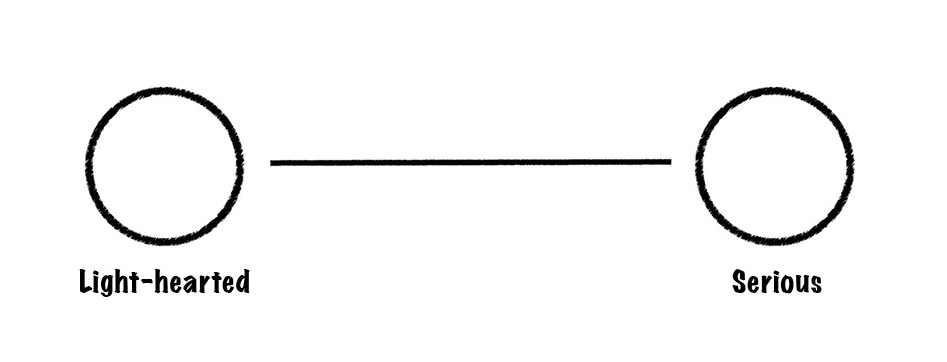Where do you think you fit on that scale?
And where do you think your customers would put you on that scale?
We know it’s overly simplistic – people are much more complex than a scale like that – and it all very much depends on the situation, but the truth is, a lot of the time we base our judgement on the cliché. It’s faster.
True.
It’s because life is complicated enough, and your brain doesn’t want to work that hard.
Police officers are serious.
Stand-ups are light hearted.
We burden the professionals with our assumptions about the profession.
We still believe it, even after seeing movies of dancing police officers.
We just don’t want to work that hard at changing our minds.
My point.
If you want to be lumped into the same bag as everyone else in your category, act the same way as everyone else in your category.
Wear what they wear. Say what they say. Be serious at work and fun in the bar. Conform. Have a smile. But do it at your desk.
And don’t be the clown in the business meeting.
Which brings me to my paradox for this week.
Most businesses want to be more successful.
Success means being better (at what you choose to be better at) than others in your category. Which means you’ll be noticed – as being better.
The paradox – how can you get to “different” by just doing “the same”?
If you want to succeed, you need to deliberately stand out from the crowd – from the start. And it’s a big crowd. And getting crowdier by the minute.
You can’t be just like everyone else, only better.
So don’t even try.
Be good at what you do. Be relevant where it matters. But be different enough to get noticed.
The cold-as-ice gun slinger with the hilarious quips. Still deadly.
The doctor with the slap-stick ward routine. Still saving lives.
The advertising creative in the Armani suit. Hmmm.
Be yourself. You’re allowed to have fun in your job.
What you bring to work is you.
It’s all you bring.
And all you can bring.
Being true to yourself makes it more enjoyable.
If you’re not enjoying the work, maybe it’s not the wrong job.
Maybe you’re just doing it wrong.
Originally published by Brand Clarity, July 2014.


Leave A Comment